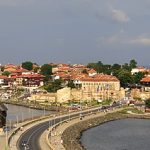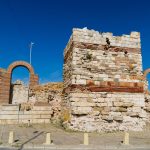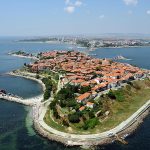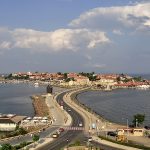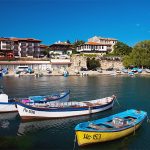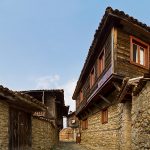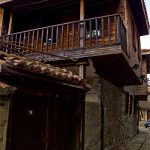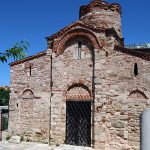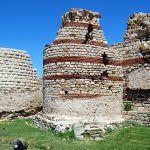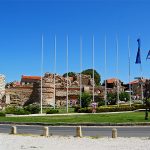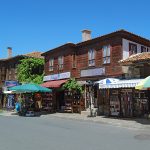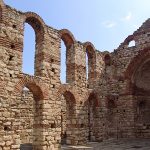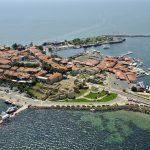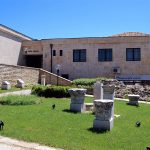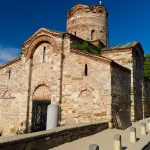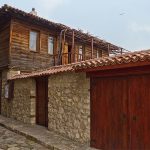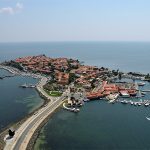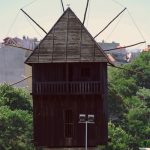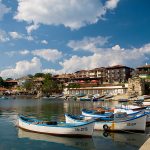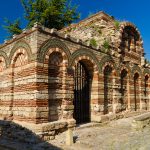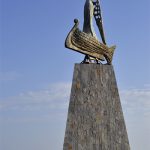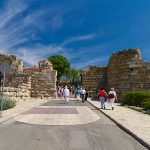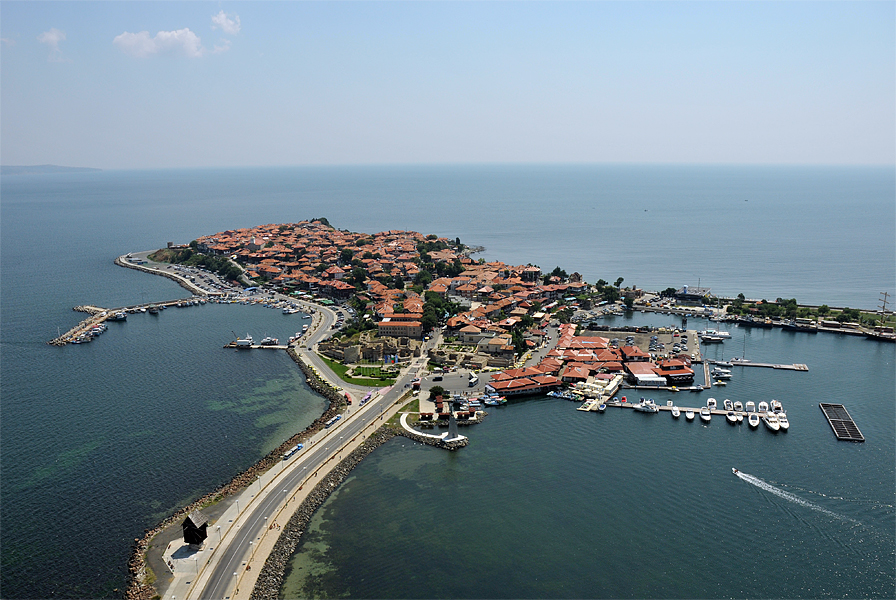
Architectural-Historical Reserve Ancient City of Nesebar
Nesebar Architectural-Historical Reserve is located in the Old Town and takes the form of an 850 m long and 350 m wide peninsula.
The Old Town was declared an architectural-historical reserve of national importance by virtue of Ordinance No 243 of the Council of Ministers of 18 July 1956.
In 1983 Old Nesebar was included in the List of World Cultural Heritage Sites of UNESCO.
Nesebar is one of the most ancient towns in Europe, founded 3200 years ago. During Antiquity the town was called Mesembria, in the Middle Ages it was known as Mesemvria, and it was later renamed to Nesebar.
Numerous archaeological finds provide evidence of the centuries-old history of Old Nesebar. Many of them can be seen at the Archaeological Museum which is located at the very beginning of the peninsula.
The different museum halls provide information about the town’s existence under the control of the Thracians, the Roman Empire, the Byzantine Empire, and the Bulgarian State.
Ever since it was founded, the town has always been surrounded by fortification walls, some remains of which have survived to this day. The first fortification walls were built by the Thracians in the 8th century BC. Later, in the 5th century BC, the Greek colonisers also constructed fortification facilities.
After Romans conquered Mesembria, they used the fortification walls as well. The period, over which Mesemvria was under the rule of the Byzantine Empire, was characterised by a construction boom (5th century AD).
The wall by the town’s gate is the best preserved example of a fortification wall from this period. During the early Byzantine period a fortification wall was built on the southwestern shore as well. It has survived until the present day.
After the capital of the Roman Empire moved to Constantinople and Christianity became the official religion, there was a boom of Christian temples built on the territory of Mesemvria.
St. Stefan Church, also known as the New Metropolia, dates back to the period 11th – 13th centuries. It has the design of a basilica with a nave and two aisles made of stone blocks and bricks.
The church was decorated in 1599. More than 1000 figures in 258 compositions are painted therein. The church preserves an original-style painted iconostasis from the end of the 16th century and a fretted bishop’s throne and pulpit from the end of the 18th century.
The church is not a functioning one. It was converted into a museum. It was declared an architectural-construction monument by virtue of publication in State Gazette, issue No 41 of 1964. It is located near the amphitheatre in Nesebar.
The unfinished 14th century Church of St. John Aliturgetus is located in close proximity to it. In 1913 the temple was severely damaged by an earthquake and is now a free access site. In 1964 it was declared an architectural-construction monument of culture of national importance.
The Church of Christ Pantocrator, one of the best preserved medieval temples, is situated in the centre of Old Nesebar.
The temple was built in the 13th – 14th centuries and has a rectangular shape. It was declared an architectural-construction monument of culture of national importance by virtue of publication in State Gazette, issue No 41 of 1964.
St. Spas Temple is another church which was transformed into a museum. It was constructed in 1609 with funding provided by a wealthy citizen of Nesember. It was decorated by an unknown master in the 17th century.
The tombstone of Byzantine Princess Mataisa Kantakouzene Palaiologina was kept in its floor for many years. The tombstone is now exhibited in the Archaeological Museum of Nesebar.
The temple was declared an architectural-construction monument of culture of national importance by virtue of publication in State Gazette, issue No 41 of 1964.
If tourists take a walk around Nesebar, they can see the remains of thermal baths from the early Byzantine period. They were built in the 6th century and were used as baths until the end of the 8th century when they were reconstructed to become residential and farming buildings.
The Church of St. Paraskevi is located nearby. It was built in the 13th – 14th centuries and has extremely interesting architectural design. It was declared an architectural-construction monument of culture by virtue of publication in State Gazette, issue No 41 of 1964.
The main church of ancient Mesemvria was called St. Sofia, just like the main temple of Constantinople, the capital of the Byzantine Empire. It is also called the Old Metropolia.
The temple is 25.50 m long. It used to be mortared, its walls were painted, and its entire floor was covered with a mosaic made of small multicoloured rocks.
The basilica was built at the end of the 5th and the beginning of the 6th centuries. It got its present shape at the beginning of the 9th century. It was declared an architectural-construction monument of culture of national importance by virtue of publication in State Gazette, issue No 41 of 1964.
The Church of St. Demetrius was discovered in 1968 during excavations which took place nearby St. Sofia Church. What survived from it are the columns that supported its dome.
According to some legends there used to be around 40 churches in Nesebar. Today there is information about 23 of them. Apart from the churches that have been transformed into museums, several other restored and well preserved temples can be seen in the Old Town.
The Church of St. John the Baptist was constructed in the 10th century. It keeps a portrait of the church-donor that dates back to the 14th century. It was declared an architectural-construction monument of culture of national importance by virtue of publication in State Gazette, issue No 41 of 1964.
Archangels Michael and Gabriel Temple has richly decorated exterior. It was declared an architectural-construction monument of culture by virtue of publication in State Gazette, issue No 41 of 1964.
The remains of the Basilica of Madonna Eleusa lie on the northern shore of the peninsula. It was built in the 6th century and according to historical sources was part of a monastery complex.
Nowadays the church is restored and partially preserved. It was declared an architectural-construction monument of culture by virtue of publication in State Gazette, issue No 41 of 1964.
Apart from the Archaeological Museum, the Ethnographic Museum of Nesebar is also located on the peninsula. Its exhibition is displayed at Moskoyani House which was built during the Bulgarian Revival Period.
The house is a typical representative of the Nesebar residential architecture. It was built in 1804 and was owned by a wealthy merchant from Nesebar.
The museum shows objects and items used in the everyday life and crafts of the people of Nesebar, as well as traditional local costumes.
Burgas, Bulgaria.

